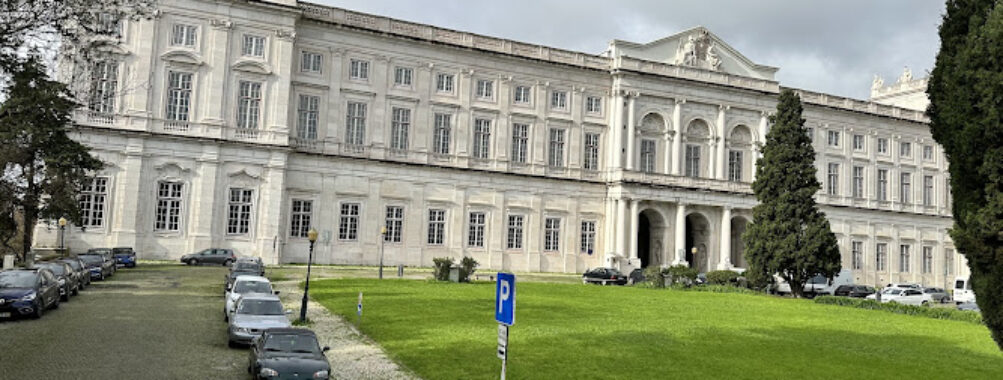
Palácio Nacional da Ajuda
Table of Contents
Description
If you’re the kind of traveler who digs stepping back into history but with a dash of elegance and a sprinkle of royal drama, then the Palácio Nacional da Ajuda is right up your alley. This isn’t just any old palace; it’s a grand neoclassical marvel that served as the 19th-century home for Portugal’s royal family. Imagine wandering through rooms where kings and queens once paced, debated, and maybe even plotted over a cup of tea. Today, it’s a museum dedicated to decorative arts, showcasing a treasure trove of period furniture, exquisite tapestries, and dazzling artworks that whisper stories of a bygone era.
What’s fascinating about the Ajuda Palace is its unique construction story. The building began after the catastrophic 1755 Lisbon earthquake, which flattened much of the city and the original royal residence. Construction started in 1796 but dragged on for decades, so you get this intriguing mix of architectural styles and evolving tastes all wrapped into one majestic structure. It’s like a historical patchwork quilt that somehow works beautifully.
Inside, you’ll find rooms decked out with everything from gilded mirrors to intricate chandeliers, each piece telling its own story. The palace’s interiors are a feast for the eyes, and you can almost feel the pulse of royal life — the pomp, the ceremony, and yes, the occasional royal drama. Plus, it’s not just about the glitz; the museum also offers a glimpse into Portugal’s cultural and artistic heritage through its carefully preserved collections.
Key Features
- Stunning neoclassical architecture blending different periods due to its long construction timeline
- Lavish royal apartments with original furniture and decorative arts from the 19th century
- Extensive collection of tapestries, paintings, and porcelain reflecting Portugal’s artistic heritage
- Wheelchair accessible entrance, parking, and restrooms, making it easy for everyone to explore
- Family-friendly environment with kid discounts and activities to keep little ones engaged
- Free parking on-site, a rare convenience in Lisbon’s busy cityscape
- Respectful and welcoming atmosphere for LGBTQ+ visitors, ensuring a safe and inclusive experience
- No on-site restaurant, so plan ahead for meals but restrooms are available for comfort
Best Time to Visit
Lisbon tends to be a popular spot year-round, but if you want to dodge the crowds and soak in the palace’s serene vibe, aim for the shoulder seasons — spring (April to June) or early autumn (September to October). The weather is usually mild and pleasant, perfect for wandering through the palace gardens afterward or exploring nearby Belém. Weekdays, especially mornings right when it opens, offer a quieter experience. Weekends can get busy, especially with families and tourists, so if you’re not a fan of crowds, steer clear.
Also, keep in mind that the palace closes at 6 PM with last admission about 30 minutes before. Planning your visit earlier in the day means you can take your time without rushing through the rooms like a whirlwind.
How to Get There
The Palácio Nacional da Ajuda sits in the Ajuda district, just west of Lisbon’s city center, making it pretty accessible. If you’re relying on public transport, buses are your best bet — several lines stop nearby, and it’s a short walk from the Belém area, which is itself a hotspot for tourists. For those who prefer taxis or ride-shares, it’s a quick 10-15 minute ride from central Lisbon, depending on traffic.
If you’re driving, you’ll be happy to know there’s free parking available right at the palace. That’s a huge plus because parking in Lisbon can be a bit of a headache otherwise. Just remember to bring some cash or a card for the museum entrance fee, and you’re good to go.
Tips for Visiting
First off, wear comfortable shoes. The palace is grand and sprawling, and you’ll want to explore every nook and cranny without your feet screaming at you by the end. Also, don’t rush. It’s tempting to zip through, but the real magic is in the details — the intricate moldings, the delicate porcelain, the stories behind each room.
Photography is usually allowed, but check the rules on flash or tripods so you don’t accidentally annoy the staff or other visitors. And speaking of staff, don’t hesitate to ask questions! The guides and attendants often have fascinating tidbits that you won’t find in the brochures.
If you’re visiting with kids, the palace offers discounts and has changing tables, which is a nice touch. There are also kid-friendly activities to keep the little ones entertained, so it’s not just an adult affair. However, since there’s no restaurant on-site, packing a small snack or planning a meal nearby is a smart move. The nearby Belém district has some fantastic eateries where you can refuel after your royal adventure.
Lastly, try to time your visit to avoid the busiest hours if you want a more intimate experience. Early mornings or late afternoons on weekdays tend to be less crowded. And if you’re someone who loves a good story, consider joining a guided tour — it adds layers of context that make the visit way more memorable.
All in all, the Palácio Nacional da Ajuda offers a rich, immersive peek into Portugal’s royal past with a side of artistic flair. It’s a spot that rewards the curious traveler who’s willing to linger and soak in the atmosphere. So, pack your curiosity and maybe a little imagination — this palace’s walls have plenty to tell.
Location
Places to Stay Near Palácio Nacional da Ajuda
Find and Book a Tour
Explore More Travel Guides
No reviews found! Be the first to review!